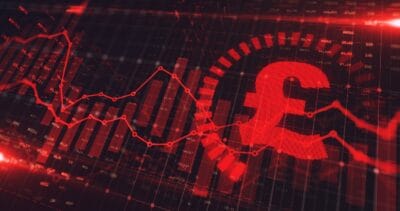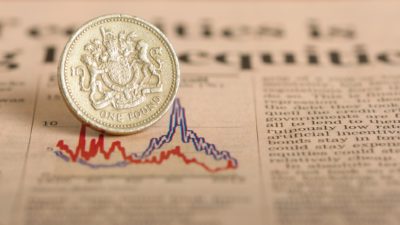The BP (LSE:BP) share price has increased by 53% over the past year. With most of its revenue and earnings coming from the extraction and sale of oil, its financial performance is inextricably linked to the price of this commodity.
Oil prices
In 2022, the average price of a barrel of Brent Crude was $101. The last time it broke through the $100 barrier was 2013, when it averaged $109. So far in 2023, oil has averaged $82 a barrel. And last week, it even dipped close to $80.
But what’s the short-term outlook for the oil price? An unscientific sample of predictions can be found in the table below. The average of these forecasts for 2023 is $92, approximately 9% lower than last year’s actual price.
| Institution/Brent Crude forecast (per barrel) | 2023 $ | 2024 $ |
| Fitch Solutions | 95 | 88 |
| Morgan Stanley | 95 | 95 |
| Goldman Sachs | 92 | 100 |
| Standard Chartered | 91 | 98 |
| Bank of America | 88 | 90 |
| Average | 92 | 94 |
Financial performance
The accounts of oil companies are notoriously difficult to interpret. BP’s preferred measure of earnings is underlying replacement cost profit. This removes the impact of changes in the value of stock. But the concept of replacement cost isn’t recognised by accounting standards.
One financial measure that’s less subjective is cash. Either it exists or it doesn’t. There’s little that can be done to distort a company’s bank balance.
Using this measure, and looking back over the past five years, 2022 was BP’s best performance. Last year, the company generated $40.9bn in cash from its operating activities. This is roughly the same as the gross domestic product of oil-rich Libya. No wonder Chief Executive Bernard Looney once described the company as a “cash machine“.
| Year | Brent Crude ($ per barrel) | Net cash generated from operating activities ($bn) | Share price at 31 December (pence) |
| 2018 | 71.34 | 22.87 | 496 |
| 2019 | 64.30 | 25.77 | 472 |
| 2020 | 41.96 | 12.16 | 255 |
| 2021 | 70.86 | 23.61 | 331 |
| 2022 | 100.93 | 40.93 | 475 |
The relationship between the oil price and cash generated by the company is a strong one. For those keen on statistics, the correlation coefficient in the table above is 0.97. Simplistically, this means the two variables are 97% matched.
This tells me that if Brent Crude is to average $92-$94 over the next two years, BP should generate at least $35bn of cash from its operations in both 2023 and 2024.
What do I think?
BP’s earnings (underlying replacement cost) per share were $145.63 (£121.06) in 2022. This gives a current price-to-earnings (P/E) ratio of 4.6. It’s on the low side (Shell‘s is 5.7) and does suggest that the company’s shares are undervalued.
But go back two years and BP was losing $28.14 (£23.39) a share. Nobody predicted the pandemic and the impact on the price of oil.
The company’s shares are currently changing hands for around 550p, valuing BP at £100bn. Although they have been higher — just before the Deepwater Horizon disaster they were 640p — the company is now less generous towards its shareholders. Back then, the dividend (in cash terms) was twice its current level. The present yield on its shares is less that the FTSE 100 average.
To sum up, with the recent steady decline in the price of oil, I doubt that the company’s shares are going to rise much further. While I don’t believe buying shares in BP would be a mistake, at the moment, I think there are better opportunities elsewhere. In particular, there are other quality companies — National Grid and J Sainsbury are two such examples — paying higher dividends. These appeal to me more as they carry fewer risks such as those associated with the oil and gas sector that could impact BP.








